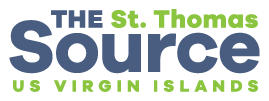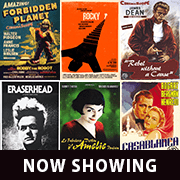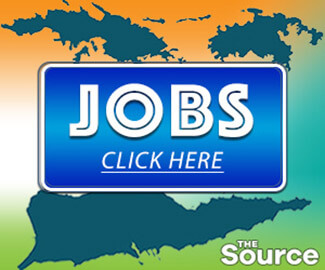Teams from the National Aeronautics and Space Administration brought outer space to the U.S. Virgin Islands this week.
Lester Morales, community outreach manager at NASA’s Kennedy Space Center, said the space agency has been visiting the territory since 2016 — except during the height of COVID-19. This year, NASA staffers plan to talk to more than four thousand students across St. Croix, St. John and St. Thomas. Morales said NASA has initiatives all over the country but cited the U.S. Virgin Islands’ proximity to Florida, where the Kennedy Space Center is.
“And so it’s closest to us, and it’s also an interest for us to come to the islands to get them engaged, to talk to the students, because we’re looking for the next generation of explorers,” he said. “And we also want the students to know that Kennedy can be an option — NASA can be an option — for their higher education, studies, research and so on.”
Morales said the outreach is meant to give Virgin Islanders the support they need to apply for internships and question NASA engineers and scientists. Morales said younger students had the opportunity to work on a 3D model of the vehicle used to transport rockets to the launchpad.
“For the higher education, or higher level student — middle school, high school — we are talking more career-oriented, you know, STEM-oriented,” he said. “Focus on, you know, getting your grades up, focus on getting volunteer work, focus on getting your application into the NASA system,” he said. “Because anyone who’s 16 years and older can already apply to become a NASA intern.”
Two of the presenters speaking to students, parents and faculty at John H. Woodson Junior High School on Tuesday night were Carlos Monge, branch chief of Test, Launch, and Recovery Operations at Kennedy Space Center, and Technology Resource Manager Anibal Karban, who treated the audience to a preview of the first crewed mission to the moon since 1972 — Artemis II.

Monge and Karban highlighted the diversity of the upcoming mission’s crew, which includes NASA pilot Victor Glover Jr. and mission specialist Christina Koch — slated to be the first Black man and first woman on the moon, respectively.

“This is definitely something I’m interested in,” said Darnell Nelson, 16, after the presentation. “I mean, I’m not really a ‘science’ person, but after tonight — it’s like very interesting knowing that there’s so much that we can do, even if . . . it seems limited, that there are many options each of us can do despite our different cultures, different race, ethnicity, beliefs.”

Morales acknowledged that most people think of astronauts when they think about NASA.
“So the next famous job is engineer, and the next famous job is a scientist,” he said. “But behind all these engineers, scientists and astronauts, you have an immense number of people supporting them — and all other careers.”
Morales compared NASA centers to small, self-sustaining cities — complete with their own banks, clinics, firefighters and police.
“So if you think that you just only have to be an engineer to work for NASA, that is not the case,” he said.





